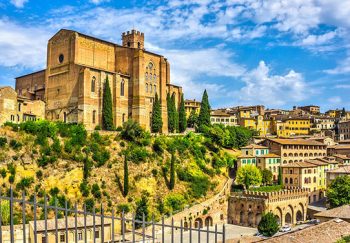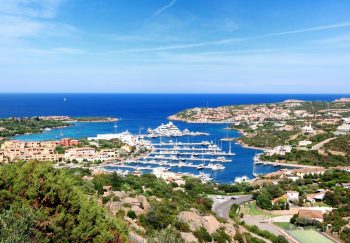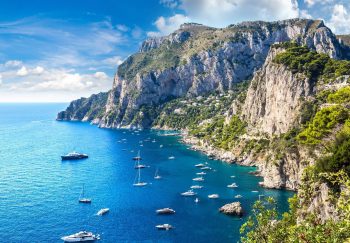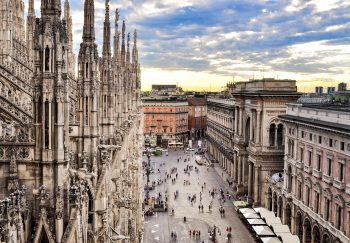It is one of the most enjoyable parts of traveling to Italy… but what about reading an Italian menu? We know that it can be daunting! Some restaurants have English menus, but many of our favorite local favorites, off the beaten path, don’t.
These are some tips to help you decide where to eat in Italy.
How can I decide where to eat in Italy?
Most Italian destinations have a variety of dining options for every budget, from big cities to small towns. The name of the restaurant will usually tell you how much your meal will cost.
A pizzeria (for pizza) or a trattoria (for a more casual meal), an osteria, or hosteria (which serves simple, wine-focused meals), are all options for a relaxed and laid-back dining experience. You want something more elegant? For a more elegant atmosphere, larger dining rooms and a wider menu, consider a ristorante.
Lunch is usually served between 12 and 2pm, while dinner is typically served between 8 and 10:30pm. Most restaurants accept reservations by phone. To ask for a table for two people at 9pm, for example, you’d say, “Vorrei fare una prenotazione per due persone alle nove”. For more essential phrases, see our . ).
Navigating the Italian menu
You’ll notice that an Italian menu is divided into sections. One section for each course. Although you don’t need to order each course, it is a good idea to order at most two. You can also split one. For example, a couple might order one antipasto and each primi before ordering a secondo.
Antipasti misti. Photo by Monica Arellano – Ongpin
These are the meanings of each section and what you can expect from each one!
AntipastiAn appetizer-like dish, antipasti is a combination of cured meats and cheeses with bruschetta (toasted bread topped with tomatoes and other toppings), pickled or fried vegetables, and olives. Ask for the antipasto dilla casa, which is a house special that features seasonal and regional specialties.
Primi:Primi is a term that refers to “first dishes” and usually includes pasta, risotto, or soup. Pasta comes in a wide variety of sizes, textures and sauces.
Like everything else on the menu. These dishes will vary depending on where you are in Italy. Al pomodoro (tomato) is a common dish, as well as olio, peperoncino (garlic oil, hot pepper), which can be found in many restaurants. Look for pasta with pesto in Liguria (basil and garlic, plus cheese); here’s how to make pesto. In Rome, you can find pasta all’amatriciana (tomatoes, pork jowls and pecorino cheeses) and alla carbonara in Emilia-Romagna (ground meat and tomato).
Keep in mind that portions are smaller than American standards, so many diners order a second meal of meat or fish to accompany their main course.
Secondi This is the meat, fish, or vegetable main dish and it is usually the most expensive.
Bistecca fiorentina, a secondo particular to Florence
Popular secondi include pollo (chicken), bistecca (steak), manzo (beef), agnello (lamb), arrosto (roast), gamberi (shrimp), salmone (salmon), frutti di mare (mixed shellfish) and frittata (omlette). For information on the way the dish is prepared, search for the words al forno (“baked”), fritto (“fried”) and alla griglia (“grilled”).
Items marked with a S.Q. The S.Q. next to the name means price based on weight. Ask your server for more information!
ContorniPrimi or secondi do not come with sides or vegetables, unless noted otherwise. Some of the most popular contorni are green salad, potatoes, and sauteed vegetables.
Dolci Many great meals end with desserts, such as gelato. (here’s how to get gelato in Italy). You can also find cakes and pies, tiramisu (a coffee-custard dessert), cannoli, ricotta in a crispy shell, pannacotta (cooked cream) and a cheese platter, to name just a few.
Tiramisu, a popular dessert across Italy
Ask your server to make the dolci fatti a casa (homemade desserts), for an extra special treat.
Digestivi: Need to digest after your meal? Take it like the Italians and have a strong drink! Digestivi are made mostly from fruit, such as grappa made from grapes, mirto made from bluberries and limoncello made from lemons. If you feel adventurous, try cynar made from artichokes. Amaro, a bitter digestivo, is another popular one. If you like it iced, order it ghiacciato.
Caffe macchiato. Photo by Neil Conway
Caffe:Coffee can be ordered after a meal. It may be normale (espresso shot), macchiato with a drop or lungo (long-lasting) coffee. Cappuccino should not be drunk after dinner because the milk can cause problems with digestion.
BevandeAnother section that is very popular on an Italian menu? Of course, the wine list! There are many restaurants that offer sparkling, white and red wines by the glass or bottle. Cocktails are rarely consumed with meals. Beer is often served alongside pizza. Tap water is rare; it is common to order a bottle naturale (still) and frizzante (sparkling water) with meals.
Continue reading: Top Food Markets in Italy
Last tips on dining in Italy
Do not hesitate to ask your waiter to recommend a restaurant ( “Cosa coniglia request translations of ingredients (“C Osa vuol dire …?”), or alert your server about any food allergies (“Houna grave allergia alimentare If you have food allergies, please see our post on eating as vegetarian, vegan, celiac or someone with food intolerances in Italy . ).
Coperto, or sitting fee, is almost always added to the bill. Servizio (a service fee) may be added to the bill on occasion, but this is usually only when you are dining in touristy places. You don’t have to tip if servizio is included. If it is just the coperto, you can simply round up your meal and leave a few extra coins if you enjoy it. Don’t forget to check out our .
Buon Appetito!
Continue reading: The 16 Most Iconic Italian Foods











